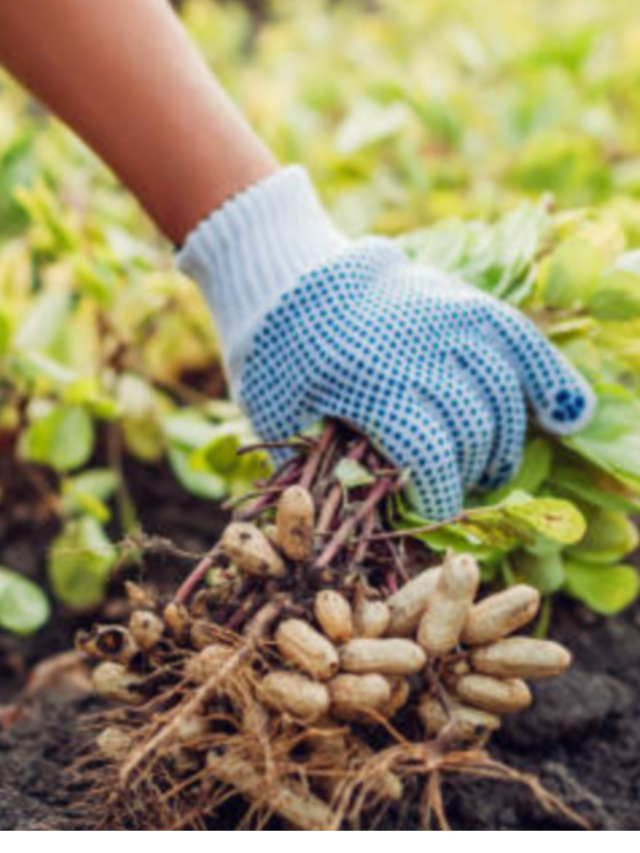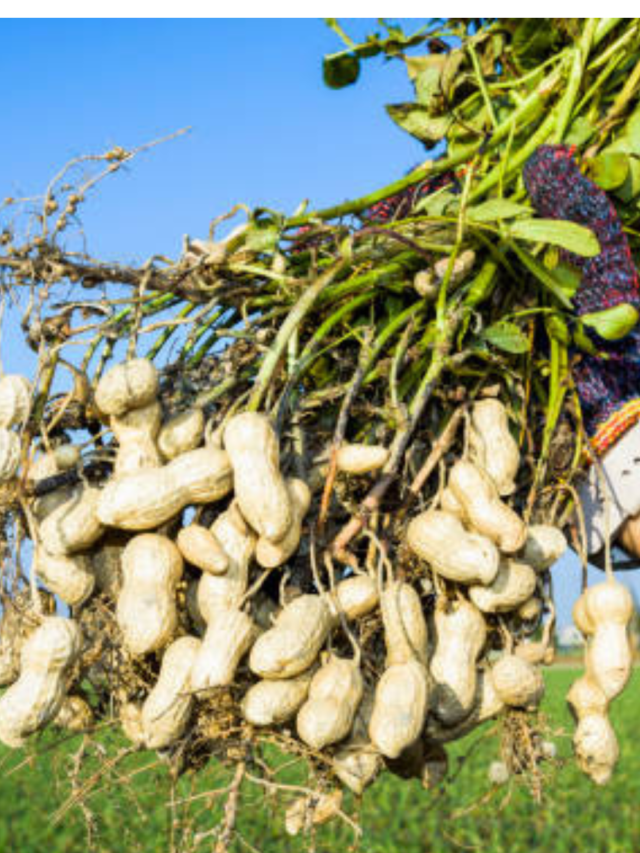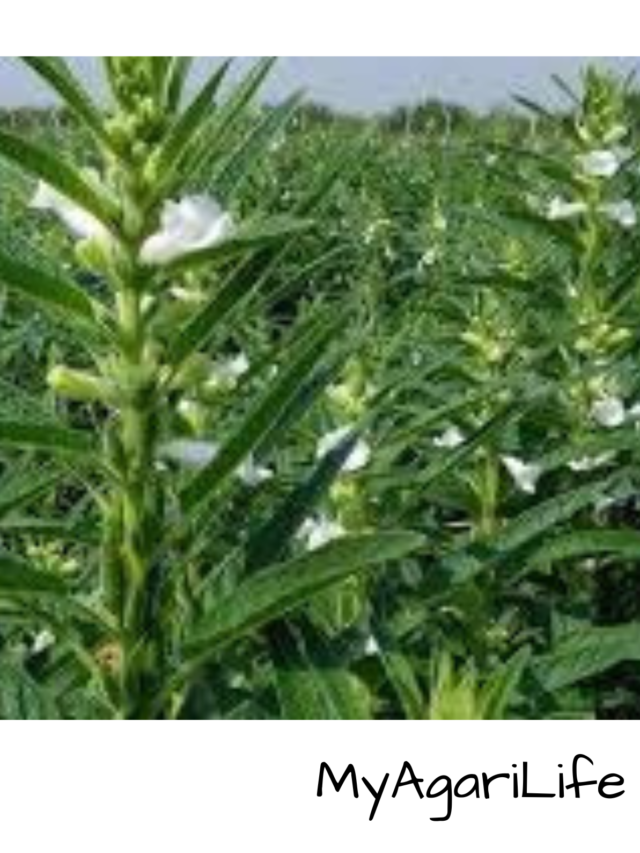Content Table
- soil solarization
- 1.1 What is soil solarization?
- 1.2 How does soil solarization work?
- 1.3 Benefits of soil solarization
- Weed Control through Soil Solarization
- 2.1 Weed management challenges
- 2.2 How soil solarization controls weeds
- 2.3 Effective timing and duration for weed control
- 2.4 Weed species susceptible to solarization
- Pest Control through Soil Solarization
- 3.1 Common pests controlled by soil solarization
- 3.2 Mechanisms of pest control
- 3.3 Considerations for effective pest management
- 3.4 Pest-resistant crops and solarization
- Disease Control through Soil Solarization
- 4.1 Soilborne diseases and their impact
- 4.2 Disease suppression through solarization
- 4.3 Specific diseases controlled by solarization
- 4.4 Best practices for disease management
- Implementing Soil Solarization
- 5.1 Site selection and preparation
- 5.2 Steps for soil solarization
- 5.3 Materials required for solarization
- 5.4 Monitoring and evaluating the process
- Alternative Methods and Combinations
- 6.1 Integrating solarization with other practices
- 6.2 Biofumigation and solarization
- 6.3 Solarization as a part of organic pest management
- Limitations and Considerations
- 7.1 Climate considerations for solarization
- 7.2 Soil type and solarization effectiveness
- 7.3 Challenges and limitations of soil solarization
- 7.4 Long-term effects on soil health
- Conclusion and Future Perspectives
- 8.1 Summary of soil solarization benefits
- 8.2 Research advancements and future directions
1.Introduction to Soil Solarization
1.1 What is soil solarization?
Soil solarization is an environmentally friendly technique used to control weeds, pests, and diseases in the soil by utilizing solar energy. It involves covering moist soil with transparent plastic sheets, which trap the sun’s heat, creating high temperatures that can kill or suppress soilborne organisms.
1.2 How does soil solarization work?
During soil solarization, the transparent plastic sheeting allows sunlight to pass through but traps the resulting heat inside. As the sun’s energy penetrates the soil, it gets absorbed and converted into heat, raising the temperature in the upper layers. The high temperatures achieved during solarization, typically between 100°F (38°C) and 140°F (60°C), can have detrimental effects on various soil pests, weeds, and pathogens.
1.3 Benefits of soil solarization
Soil solarization offers several benefits for weed, pest, and disease control:
Weed control: Solarization helps reduce weed populations by inhibiting weed seed germination and killing weed seeds and seedlings present in the soil.
Pest control: High temperatures reached during solarization can control many soil-dwelling pests, including nematodes, fungi, bacteria, insects, and their larvae.
Disease control: Soil solarization effectively suppresses soilborne diseases caused by fungi, bacteria, and other pathogens, reducing the risk of crop infections.
Environmentally friendly: Solarization is a non-chemical method that minimizes the use of pesticides, making it an environmentally friendly option for soil management.
Cost-effective: Compared to chemical treatments, soil solarization can be cost-effective, requiring minimal investment in materials and equipment.
Enhanced nutrient availability: Solarization can increase the availability of certain nutrients by promoting the breakdown of organic matter and releasing bound nutrients for plant uptake.
Improves soil structure: The heat generated during solarization can enhance soil physical properties by promoting the breakdown of organic matter and improving soil structure, aeration, and drainage.
It’s important to note that the effectiveness of soil solarization can vary depending on factors such as geographic location, soil type, and specific pest and disease pressures. Local recommendations and guidelines should be considered for successful implementation.
2.Weed Control through Soil Solarization
2.1 Weed management challenges
Weeds pose significant challenges in agriculture and gardening as they compete with crops for resources like water, nutrients, and sunlight. They can reduce crop yields, harbor pests and diseases, and require extensive labor and herbicide use for control. Integrated weed management strategies, including soil solarization, can be effective in mitigating weed problems.
2.2 How soil solarization controls weeds
Soil solarization suppresses weeds through several mechanisms:
High temperatures: The heat generated during solarization can kill weed seeds, seedlings, and shallow-rooted weeds present in the upper soil layers.
Reduced seed germination: Solarization can inhibit the germination of weed seeds by altering the physical and chemical conditions in the soil, such as moisture and oxygen levels.
Weed seedbank depletion: Prolonged exposure to high temperatures can deplete the weed seedbank in the soil, reducing future weed infestations.
Allelopathic effects: Solarization can release volatile compounds from organic matter decomposition, which may have allelopathic effects on weed germination and growth.
2.3 Effective timing and duration for weed control
For optimal weed control, soil solarization is typically performed during hot and sunny periods of the year when maximum solar radiation can be harnessed. The process is most effective in regions with high solar radiation, such as warm and arid climates. The recommended duration of soil solarization varies but is generally around 4 to 6 weeks to ensure sufficient heat penetration and weed suppression.
2.4 Weed species susceptible to solarization
While solarization can control a wide range of weed species, some weeds are more susceptible than others. Broadleaf weeds, grasses, and annuals tend to be more sensitive to solarization than deep-rooted perennials. Common weeds effectively managed through solarization include pigweed, purslane, crabgrass, foxtail, lambsquarters, and various other annual and shallow-rooted weeds.
It’s important to note that solarization may not completely eliminate all weed species or prevent future weed germination and establishment. Integrated weed management practices, such as crop rotation, mulching, and hand weeding, can complement solarization for long-term weed control.
3.Pest Control through Soil Solarization
3.1 Common pests controlled by soil solarization
Soil solarization can effectively control a range of soil-dwelling pests, including:
Nematodes: Solarization can reduce populations of plant-parasitic nematodes, which are microscopic worms that feed on plant roots and cause damage.
Fungi and bacteria: High temperatures during solarization can suppress pathogenic fungi and bacteria that cause soilborne diseases, such as damping-off, root rots, and wilts.
Insects and their larvae: Many insect pests and their larvae, including soil-dwelling pests like cutworms and wireworms, can be controlled or suppressed through solarization.
Weed seeds and seedlings: Solarization not only controls weeds but also targets weed seeds and seedlings present in the soil.
3.2 Mechanisms of pest control
Soil solarization affects pests through multiple mechanisms:
Heat stress: High temperatures during solarization cause thermal stress on pests, leading to their mortality or reduced activity and reproduction.
Disruption of pest life cycles: Solarization can disrupt the life cycles of pests by killing or inhibiting their eggs, larvae, and pupae in the soil, thereby reducing their populations.
Suppression of disease-causing organisms: Many pests, such as nematodes, fungi, and bacteria, are responsible for transmitting soilborne diseases. Solarization can suppress these disease-causing organisms, reducing the risk of crop infections.
3.3 Considerations for effective pest management
To achieve effective pest control through soil solarization, consider the following factors:
Temperature requirements: Pests have varying temperature thresholds for mortality or suppression. The duration and intensity of solarization should be sufficient to reach lethal temperatures for target pests.
Pest life cycles: Understanding the life cycles and seasonal activity patterns of pests can help determine the most suitable timing for solarization.
Soil moisture: Adequate soil moisture is essential for solarization. Irrigate the soil before covering with plastic to ensure optimal heat transfer and pest control.
Plastic sheet selection: Use transparent plastic sheets that allow maximum sunlight penetration while maintaining heat retention.
Soil preparation: Remove debris, rocks, and large clumps of soil before solarization to ensure even heat distribution.
3.4 Pest-resistant crops and solarization
To enhance pest management, consider planting pest-resistant crop varieties. Some crop species and cultivars have natural resistance or tolerance to certain pests and diseases. Combining pest-resistant crops with soil solarization can provide additional protection and reduce reliance on chemical pesticides.
Remember to consult local agricultural extension services or experts for specific pest identification and recommendations for your region, as pest pressures can vary geographically.
4.Disease Control through Soil Solarization
4.1 Soilborne diseases and their impact
Soilborne diseases are caused by various pathogens, including fungi, bacteria, nematodes, and other microorganisms present in the soil. These diseases can have a detrimental impact on plants, leading to reduced growth, yield losses, and even crop failure. Common soilborne diseases include damping-off, root rots, wilt diseases, and various fungal and bacterial infections.
4.2 Disease suppression through solarization
Soil solarization can effectively suppress soilborne diseases through several mechanisms:
Temperature-mediated pathogen control: High soil temperatures achieved during solarization can kill or weaken disease-causing organisms, including fungi, bacteria, and nematodes.
Reduction of pathogen populations: Solarization can significantly reduce the populations of soilborne pathogens, limiting their ability to infect plants.
Disruption of disease cycles: By targeting the pathogens in the soil, solarization can disrupt the disease cycles, preventing reinfection and reducing the severity of disease outbreaks.
4.3 Specific diseases controlled by solarization
Soil solarization has been shown to provide control or suppression of various soilborne diseases, including:
Fusarium wilt
Verticillium wilt
Pythium damping-off
Phytophthora root rot
Rhizoctonia root rot
Sclerotinia diseases
Bacterial wilt
The effectiveness of solarization against specific diseases can vary depending on factors such as pathogen sensitivity to heat, soil type, solarization duration, and local environmental conditions.
4.4 Best practices for disease management
To maximize disease control through soil solarization, consider the following best practices:
Understand disease characteristics: Identify the specific soilborne diseases affecting your crops and learn about their life cycles, environmental requirements, and susceptibilities to heat.
Optimal timing: Choose the time of year when soil temperatures are naturally high and solar radiation is abundant. This may vary depending on the region and specific disease concerns.
Duration of solarization: Typically, soil solarization requires 4 to 6 weeks to achieve effective disease suppression. Adjust the duration based on the target disease and local conditions.
Soil moisture: Ensure the soil is adequately moist before covering with plastic sheets to facilitate heat transfer and maximize disease control.
Plastic sheeting: Use clear, transparent plastic sheets that allow sunlight penetration while retaining heat. Secure the edges of the plastic to prevent heat loss.
Crop rotation: Rotate crops to minimize disease carryover and break disease cycles, further enhancing disease management in conjunction with solarization.
Remember to consult local agricultural resources or experts for specific disease recommendations and guidance tailored to your region and crops. Integrated disease management approaches that combine solarization with other practices, such as crop rotation, resistant cultivars, and sanitation, can provide comprehensive disease control strategies.
5.Implementing Soil Solarization
5.1 Site selection and preparation
Choose a site with adequate sunlight exposure. Select an area free from large obstructions like trees or buildings that may shade the soil and limit solar radiation.
Ensure the soil is well-drained to prevent waterlogging during the solarization process.
Clear the area of debris, rocks, and large clumps of soil that can interfere with heat distribution.
5.2 Steps for soil solarization
Prepare the soil: Loosen the soil surface with a rake or hoe to remove any weeds or vegetation.
Irrigation: Moisture is crucial for effective solarization. Irrigate the soil thoroughly to a depth of about 12 inches (30 cm) to ensure adequate soil moisture before covering.
Covering with plastic: Place clear, transparent plastic sheets directly over the prepared soil surface. Use high-density polyethylene (HDPE) plastic with a thickness of 1 to 4 mils (25 to 100 microns).
Secure the edges: Bury or secure the edges of the plastic sheets to prevent heat loss and maintain a tight seal. This can be done by covering the edges with soil or using rocks, boards, or other materials.
Duration: Leave the plastic sheets in place for a recommended duration of 4 to 6 weeks. This allows sufficient time for the soil to heat up and for weed seeds, pests, and pathogens to be controlled or suppressed.
Monitoring: Regularly monitor the soil temperature using a soil thermometer to ensure that it reaches and maintains the desired temperature range for effective solarization.
5.3 Materials required for solarization
Clear, transparent plastic sheets (high-density polyethylene)
Irrigation system or water source for pre-soaking the soil
Soil thermometer for temperature monitoring
Rake or hoe for soil preparation
Materials for securing the plastic sheets (e.g., soil, rocks, boards)
5.4 Monitoring and evaluating the process
Regularly monitor the soil temperature during solarization to ensure it remains within the desired range for effective control of pests, weeds, and diseases.
Assess the success of solarization by evaluating weed suppression, pest and disease reduction, and overall improvement in crop performance in subsequent plantings.
Keep records of the solarization process, including timing, duration, temperature, and any observations, to refine future soil solarization efforts.
It’s important to note that the effectiveness of soil solarization can vary depending on factors such as climate, soil type, pest and disease pressure, and other local conditions. Consult local agricultural extension services, experts, or resources for specific recommendations and guidelines tailored to your region.
6.Alternative Methods and Combinations
6.1 Integrating solarization with other practices
Soil solarization can be combined with other pest and disease management techniques to enhance effectiveness. Some complementary practices include:
Crop rotation: Rotate crops with different susceptibility to pests and diseases to break pest and pathogen life cycles and reduce reinfestation after solarization.
Biofumigation: Incorporate biofumigant cover crops, such as mustard or marigold, into the solarization process. These plants release natural compounds that have pesticidal properties and can help further suppress pests and diseases.
Mulching: After solarization, apply organic mulch to the soil surface to prevent weed germination and conserve soil moisture. Mulch also acts as a barrier against new weed seedlings and can help maintain the benefits of solarization.
6.2 Biofumigation and solarization
Biofumigation is the process of using specific plants, usually brassicas like mustard or radish, that release volatile compounds when their tissues are incorporated into the soil. These compounds have pesticidal properties and can help control pests and diseases. Biofumigation can be combined with soil solarization by growing biofumigant cover crops before solarization and then incorporating their plant residues into the soil.
6.3 Solarization as a part of organic pest management
Soil solarization aligns well with organic pest management approaches, as it reduces the reliance on chemical pesticides. By combining solarization with other organic practices such as crop rotation, use of pest-resistant varieties, biological control agents, and cultural practices like sanitation and proper plant spacing, a comprehensive organic pest management system can be established.
When considering alternative methods and combinations, it is important to assess the compatibility of different practices, their effectiveness against specific pests and diseases, and the feasibility in your specific growing conditions. Local expertise and research-based recommendations can provide valuable insights into integrating soil solarization with other techniques for improved pest and disease management.
7.Limitations and Considerations
7.1 Climate and seasonality
Soil solarization is most effective in regions with high solar radiation and warm temperatures. It may not provide significant benefits in cooler climates or during seasons with limited sunlight. Consider the local climate and the timing of solarization to ensure optimal results.
7.2 Soil type and depth
The effectiveness of soil solarization can vary depending on soil type and depth. Sandy soils heat up more quickly and evenly compared to heavy clay soils. Deep-rooted perennial weeds or pathogens may be less affected by solarization due to their ability to survive at greater soil depths.
7.3 Weed and pest seedbank
Solarization primarily targets shallow-rooted weeds and pests near the soil surface. It may not completely eliminate weed and pest seedbanks in deeper soil layers or those carried by wind or animals. Ongoing weed and pest management practices are necessary to prevent reinfestation.
7.4 Pathogen survival and diversity
Some pathogens have survival mechanisms that allow them to withstand high temperatures during solarization. Additionally, solarization may have varying efficacy against different pathogens. Understanding the specific pathogens present and their susceptibilities to heat is important for effective disease control.
7.5 Impact on beneficial organisms
Soil solarization can also affect beneficial soil organisms, including beneficial microbes, earthworms, and mycorrhizal fungi. While the impact on beneficial organisms can be temporary, it is essential to promote their recovery and reestablish their populations after solarization.
7.6 Plastic waste and environmental impact
The use of plastic sheets for solarization raises concerns about environmental impact and plastic waste. Consider using biodegradable or compostable mulch films as an alternative to conventional plastics. Proper disposal or recycling of plastic sheets is crucial to minimize environmental consequences.
7.7 Integrated approach for long-term management
Soil solarization is most effective when combined with other integrated pest and disease management practices. Implementing a holistic approach that includes crop rotation, resistant varieties, cultural practices, and monitoring can provide long-term and sustainable control.
When considering soil solarization, it is important to assess the specific conditions, challenges, and goals of your farming or gardening system. Local agricultural resources, experts, and research-based information can provide valuable guidance and help tailor the implementation of soil solarization to your specific needs.
8.Conclusion and Future Perspectives
Soil solarization is a valuable technique for weed, pest, and disease control in agriculture and gardening. It utilizes the power of solar radiation to heat the soil, effectively suppressing weeds, reducing pest populations, and controlling soilborne diseases. By harnessing the natural energy of the sun, soil solarization offers an environmentally friendly and sustainable approach to pest and disease management.
While soil solarization has proven to be effective, it is important to acknowledge its limitations and consider it as part of an integrated pest and disease management strategy. Combining solarization with other practices such as crop rotation, biofumigation, mulching, and cultural practices can enhance its effectiveness and provide a comprehensive approach to sustainable agriculture.
Future perspectives in soil solarization research and implementation include:
Refining solarization techniques: Continued research can focus on optimizing solarization methods, such as exploring different plastic materials, adjusting durations and timings, and improving heat distribution within the soil profile.
Climate adaptation: As climate change affects weather patterns and temperatures, there is a need to adapt soil solarization techniques to changing climatic conditions. Developing solarization strategies that are effective in different climatic regions will be crucial.
Integrated approaches: Further investigation into the integration of solarization with other pest and disease management techniques can provide more effective and sustainable control strategies. Understanding the synergistic effects of combining solarization with biological control agents, biofumigation, and resistant crop varieties can lead to enhanced pest and disease management.
Organic and sustainable agriculture: Soil solarization aligns well with organic and sustainable agriculture practices by reducing reliance on chemical pesticides. Research can focus on optimizing solarization within organic production systems and exploring its potential in reducing synthetic pesticide use.
Economic feasibility: Evaluating the economic feasibility and cost-effectiveness of soil solarization, including considerations such as labor, materials, and long-term benefits, can help farmers and growers make informed decisions about its implementation.
By continuing to explore and improve soil solarization techniques, adapting them to different regions and climates, and integrating them with other sustainable practices, we can further enhance its effectiveness and promote its adoption in agriculture and gardening. Soil solarization has the potential to contribute to more environmentally friendly and sustainable farming systems, reducing the reliance on synthetic pesticides and promoting healthier ecosystems.









